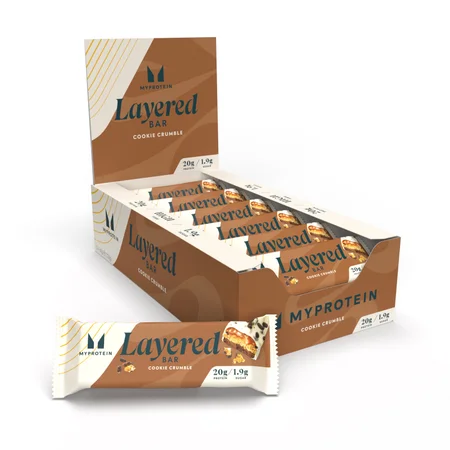What Is Aerobic Endurance? | Definition, Test & Training

Aerobic endurance is important for many daily tasks. It impacts your capabilities in the gym, at work, and even around the house, and a higher capacity for aerobic endurance means you can exercise at a greater intensity for longer. Read on to find out what aerobic endurance is, how you can improve it, and how training for aerobic endurance can improve your overall fitness and general cardiovascular health.
You’ll find in this article:
- What is Aerobic Endurance?
- Why is Aerobic Endurance Important?
- Aerobic vs. Anaerobic Exercise & Training
- How to Improve Aerobic Endurance
- Aerobic Endurance Tests
- Nutrition for aerobic endurance
- How often should you perform aerobic exercise
What is Aerobic Endurance?
Aerobic endurance refers to cardiovascular fitness Many believe that it is one of the most vital fitness-related attributes because of its link to cardiovascular health.
Improving your aerobic endurance will improve your body’s capability of meeting higher demands for oxygen during intense exercise.

How Can I Find Out What My Aerobic Endurance is Like?
The best way of measuring aerobic endurance is through a physiological performance test known as a VO2 max test. The test measures the maximum amount (volume) of oxygen (O2) you can use during intense or maximal exercise. Training to improve your aerobic endurance increases your VO2 max as your body uses oxygen more efficiently.
Why is Aerobic Endurance Important?
Aerobic endurance is incredibly important as it affects how efficiently the body can transport oxygen to where it’s needed. Your cardiovascular fitness depends on factors such as age, lifestyle, genes and activity levels. It’s typically at its highest from late teen years to 30s and gradually declines with age.
Maintaining a good level of aerobic endurance is important for everyone — not just athletes — as it generally comes with a range of other health benefits. Your heart is a muscle, and like other muscles, it requires routine training to improve its strength and ability to cope with everything that your body demands of it.

6 Foods For Your Muscle Building Meal Plan
The foods you need to really build muscle.
Aerobic vs. Anaerobic Exercise & Training
Anaerobic training involves working at a high intensity, where the body needs to find energy to power your muscles in place of oxygen, whereas aerobic exercise generally requires a light to moderate intensity. The body also relies upon the anaerobic system during heavy resistance training sessions.
Your aerobic threshold is the level of intensity you can exercise at before you accumulate too much lactic acid in the blood. When you go into anaerobic mode you burn more calories in less time, but this level of intensity is not sustainable for long (typically up to three minutes).
Anaerobic exercises — such as short-distance running, weightlifting and cross training — increase your anaerobic endurance, meaning that you can work harder for longer.
Aerobic exercise requires oxygen to maintain performance, and it burns the fats and carbohydrates gained from food and supplements.
What are the Benefits of Aerobic Endurance?
Aerobic endurance training can improve general physical fitness. This can boost performance in other areas of training. For example, less fatigue when lifting weights.
Additionally, there can also be health benefits to training to increase aerobic endurance, and it can improve overall cardiovascular health.
How to Improve Aerobic Endurance
Interval-based workouts are one of the best ways to improve aerobic endurance. It’s all a matter of increasing cardiovascular ability gradually over time.
Running
Running is one of the best ways to improve aerobic endurance and it is highly compatible with interval training.
First, you can attempt a staggered approach to improving aerobic endurance:
- Jog at a steady pace for two minutes.
- Run at a faster intensity for 30 seconds.
- Return to a steady pace for two minutes.
- Repeat this for 20 minutes.
Then there is the ladder approach to improving aerobic endurance:
- Run comfortably for 10 seconds then sprint for 10 seconds.
- Run comfortably for 20 seconds then sprint for 20 seconds.
- Repeat this while increasing the duration by 10 seconds each time until you reach one minute, and then rest.
Cycling
With cycling, you can change the gears to alter intensity levels (or settings when on a machine).
- Cycle at a comfortable pace for three minutes and then switch to a higher resistance gear for one minute.
- Repeat this over a half-hour session.
- You can try adding an alternating incline to your session to really test yourself and put your heart to work.

Swimming
Swimming is another form of aerobic exercise that lends itself readily to interval training. The length of the pool sets your measures for you. Opt for a HIIT-style approach:
- Swim as fast as you can for 30 seconds, rest for 30 seconds or swim fast from one end of the pool to the other, and swim at a gentler pace on the return lap.
- Repeat for two minutes with a rest between sets.
Aerobic Endurance Tests
There are several ways to test your level of aerobic endurance. To begin, you can set your own tests and create your own milestones. A simple way is to test yourself once a week on a predetermined target. For example, a 5km run.
First, find out if you can complete this distance without any breaks. Then monitor your heart rate and record your maximum heart rate as you progress, and gradually increase your speed over time while completing the same distance.
VO2 Max Test
This test requires qualified personnel and specialist equipment, so isn’t easily done at home. Your VO2 max, or maximal oxygen consumption, is the amount of oxygen your body can use during exercise. Testing requires a subject to perform exercise until exhaustion while professionals measure oxygen consumption, carbon dioxide production and volume of air.
Pacer or Shuttle Test
Also known as the “beep test”, this is a running test run over a 20m distance. Participants run back and forth over this distance keeping time with “beeps” that set the pace. These beeps become more frequent over the course of the test, and participants must run faster until they can no longer keep pace.
Nutrition for Increasing Aerobic Endurance
A diet high in fats and carbohydrates is needed to ensure your body has sufficient access to muscle and liver glycogen stores when performing bouts of endurance training.
That said, if weight loss is your objective, then macronutrient intake must be considered accordingly, allowing for a caloric deficit while still consuming a relatively high amount of fats and carbohydrates.
As with any form of exercise, sufficient protein intake is essential to ensure that damaged muscle tissue is repaired sufficiently. For those whose focus is resistance training, recommendations can be as high as 2.2g per kilo of body mass. For people whose primary objective is increasing aerobic endurance, then 1.2-1.4g per kilo of body mass should be enough for muscle growth and repair.

How Often Should You Perform Aerobic Exercise
As with all types of training, this depends on your individual goals. If overall health is your primary objective, the NHS recommendation is 150 minutes of moderate exercise per week.
If your goal is to challenge yourself, such as setting a new 5k PB or running a long- distance race, then you should train specifically for these objectives. Design a training programme with a variety of distances and intensities for up to six days of the week — you can even include additional resistance training on top.
Take Home Message
Aerobic endurance training is any form of training that uses oxygen to meet energy demands and is generally performed at a light to moderate intensity. Your cardiovascular fitness level is measured in terms of the amount of oxygen pumped by your heart throughout your body to your active muscles.
You can improve your aerobic endurance with frequent endurance training. Interval-based training, which involves alternating bursts of light and high-intensity activity, is one of the best ways to improve aerobic capacity and overall cardiovascular health.
FAQ
What is aerobic endurance?
Aerobic endurance is your ability to continually do an activity (running, biking, swimming) without becoming fatigued. The term “aerobic” refers to oxygen, so aerobic endurance is how efficiently your body gets oxygen to your muscles during exercise.
What are the benefits of aerobic endurance training?
Consistent aerobic endurance training will build up your stamina over time. If you push your body to work a little bit longer or a little bit harder when performing the same activity, you will increase your stamina.
Why is aerobic endurance important?
Aerobic endurance is a key measure of the health of your heart and muscles. If you are looking to burn fat, you need to be in a calorie deficit, and aerobic activity is one of the best ways to do this.
How do you improve aerobic endurance?
Aerobic endurance, like other measures of fitness, is improved by consistent practice. Increase the duration or intensity of your workouts gradually to improve your overall aerobic endurance over time.
What are five aerobic activities?
Aerobic activities include running, biking, stair climbing, swimming, and rowing — and there are many others.





